Blue blazes

They’re predicting 105 degrees today here in T-town—that’s an all-time, record-breaking high. Now, if you’re in the Midwest, the South, or the Southwest and you’re reading this, you’re probably thinking, “And this is news how?” Well, this is where the part about “all-time” comes in—since white settlement of this area, at least, it has never, ever been this hot before. This place ain’t made for 105°. Almost nobody has air conditioning, but the discomfort is only the half of it. Who knows what this will mean for the snow pack in the mountains, or the water supply?
Beastly or not, though, it seemed a shame to let all this amazing solar energy go to waste. So over the weekend the Tailor devised a passive food dehydrator out of old window panes (buying an electric dryer, to us, seemed to defeat the purpose of home sustainability). Our first attempt at drying berries seemed successful, so at 5:30 this morning,before the heat kicked in, we headed to the Blueberry Park to pick about three gallons more. (The berries are happy with the heat, even if nobody else is!)
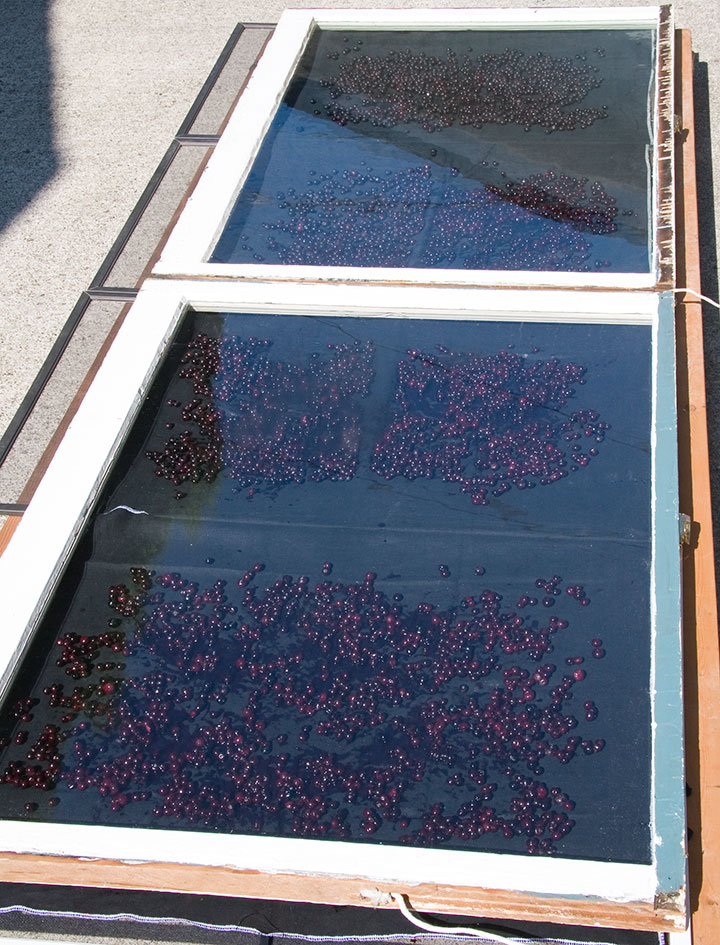
Here’s how it works: four nylon window screens (don’t use aluminum! It reacts with the food) hover over the pavement, propped up on wooden beams to allow for air circulation. Tied to each screen is a black linen cloth to absorb more heat and provide a clean surface for the food, while still letting air pass through. The glass windows fit right on top, providing the perfect space to trap hot air, just like a greenhouse.
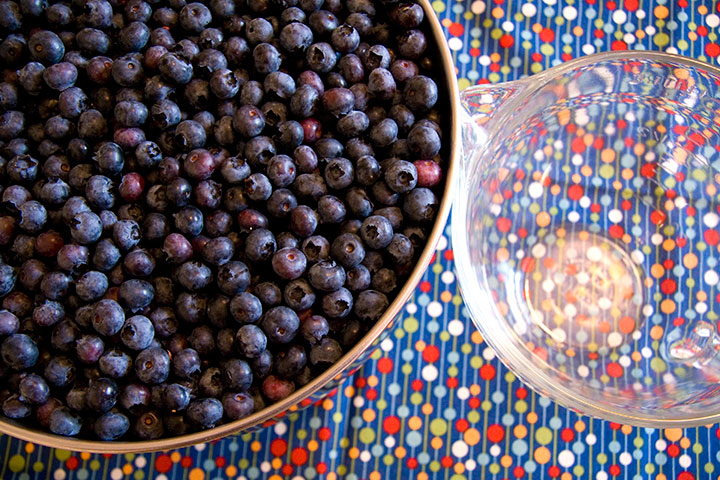
Now, on to the fruit itself. For blueberries, at least, the dried yield ends up being about a quarter of what you started with (so for example, two quarts of fresh berries will become about a pint dried), so it’s best to start with a big batch—another vote for a large, homemade drier over those tiny electric ones. Our drying system will hold five or six quarts of fresh berries.
Wash the berries and remove any stems, petals, grass and unripened fruit (and especially spiders!), and set a large stockpot of water to boil. Place about a quart of berries into a steamer —the berries will dry faster if you split the skins first, and smaller batches seem to be more effective than boiling the whole batch at once.

Once your water is boiling, put the steamer into the pot, and boil for thirty seconds—just long enough for the skins to split. Then remove the steamer and dump the hot berries into a colander in a cold sink (the ice water stops the cooking process).
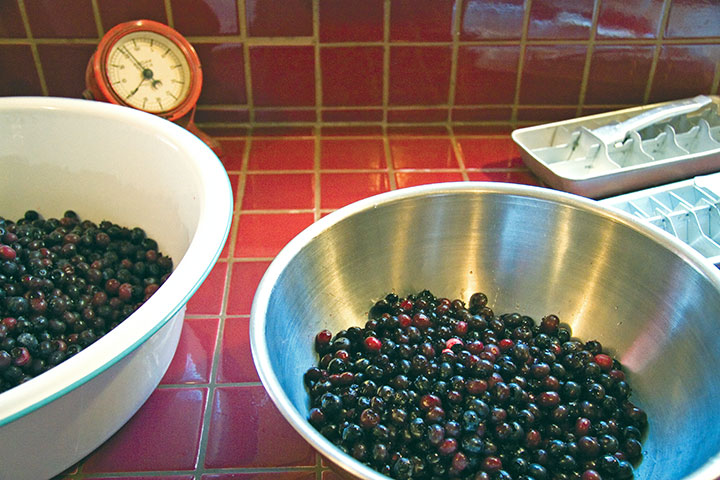
Here’s what the split berries look like; they should feel squishy, and you should be able to see the pale interior flesh on some of them. (Sorry about the photo quality—that red tile just kills the light.)

Okay, now you’re ready to take ’em outside. Distribute the berries evenly over the cloth-covered screens,
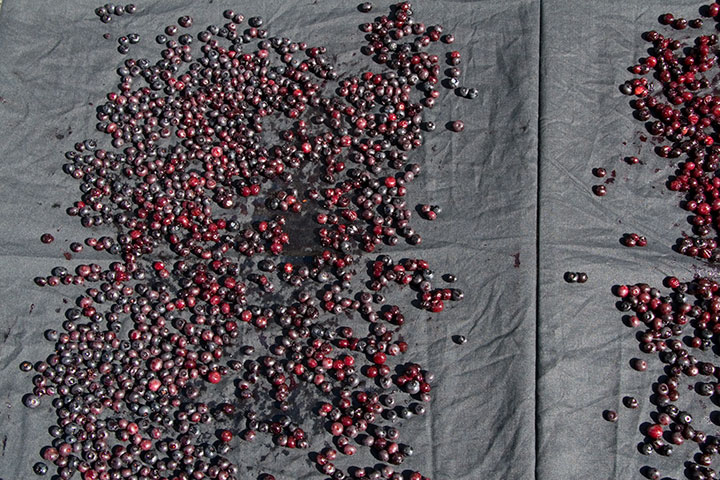
and spread them out until you have a single layer.
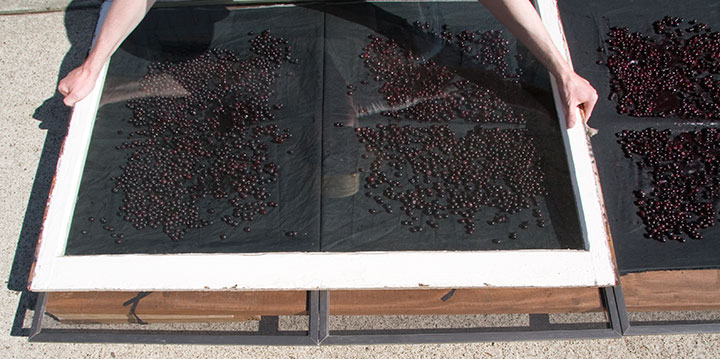
Now, just put the glass back into place, and let the sun do the work. It’s amazing how quickly the humidity inside the glass disappears, and how hot it gets in there. The ideal temperature for drying blueberries is about 140°F, but we’ve already seen our dryer get up to 155°. It doesn’t seem to hurt the final product, but at the hottest part of the day we cover the glass with a sheet for an hour or so, just to cool it down a bit.
About once a day it’s good to redistribute and un-stick the fruit, which helps it dry faster and more evenly. It takes about three full, sunny days to dry the berries completely—unlike raisins, you want blueberries to be so dry they rattle. You should end up with hard little husks that don’t squish and don’t stick together.
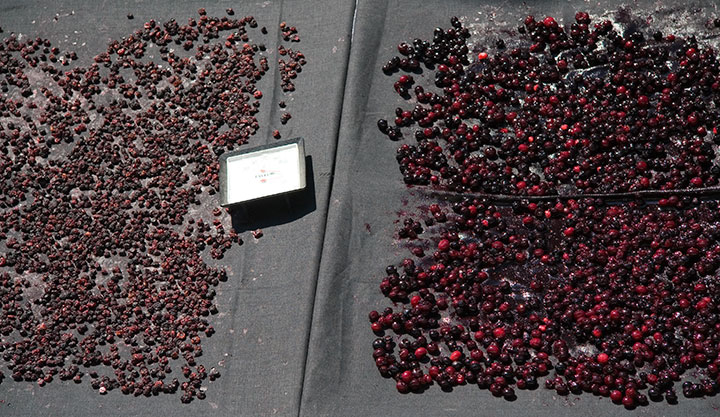
Here you can see the difference between fresh, split berries and ones that are almost done. Once they’re dry, pasteurize them for fifteen minutes in a 175° oven to kill any residual germs, and store in a sealed, air-tight jar.
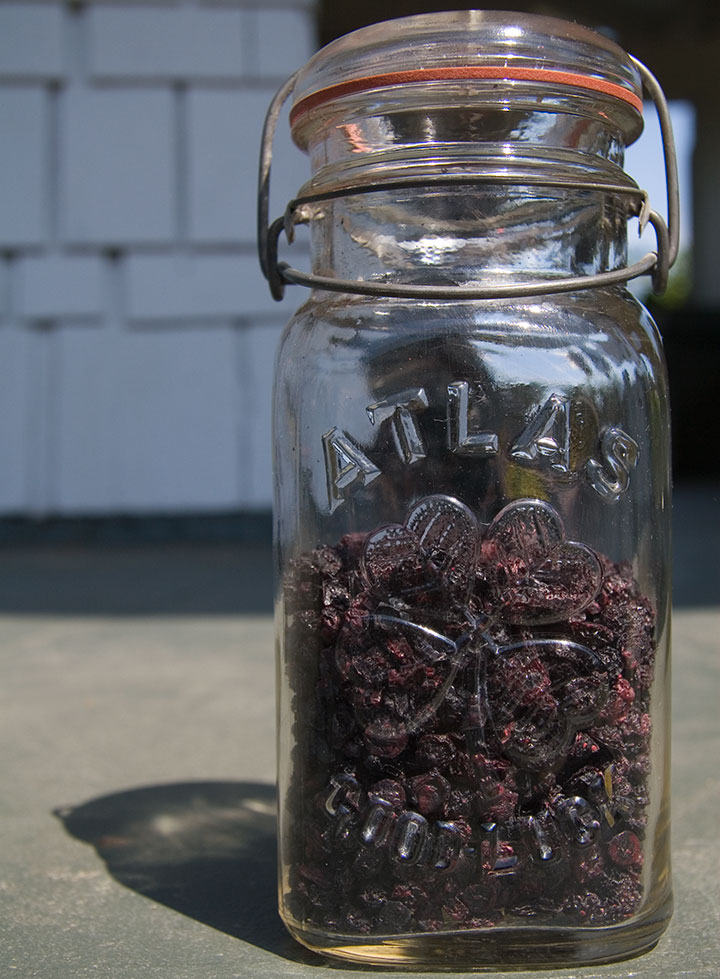
Since we’ll probably use our dried berries for a wide variety of recipes, we left them unsweetened. That way we can reconstitute them for pancakes, sauces and baked goods this winter without any recipe guesswork. They’re still sweet enough to eat plain, too (trail mix, anyone?), although if you prefer your berries pre-sweetened, you can coat them in simple syrup before drying.
Either way, you’ll end up with sunshine in a jar.
![Chandler O'Leary [logo]](https://chandleroleary.com/wp-content/themes/chandleroleary/images/logo.png)
I’ve spent the past several days finding things to do which are in air-conditioned building, or heading up the river to find some cool breezes.
Your berries look yummy!
Your drying screens are awesome! Electrical dryers are really noisy and expensive, too, which put yet another notch in your sustainable method!
so practical, so yummy, and strangely romantic… and makes me a little frustrated that my days are too full (of what?!) to dry berries…